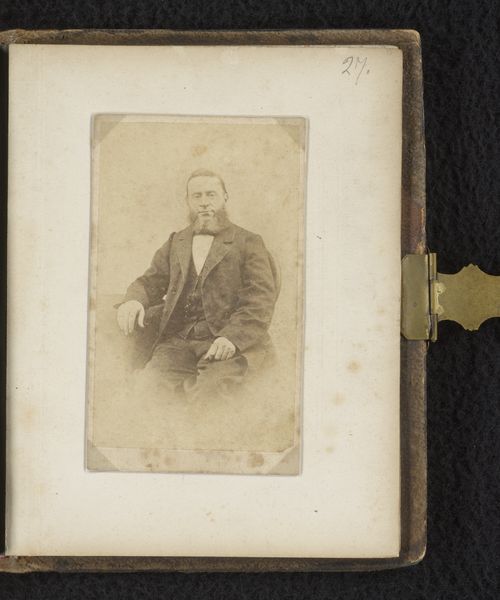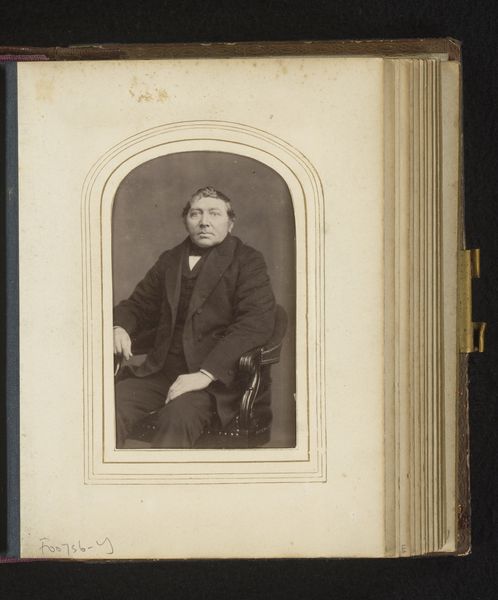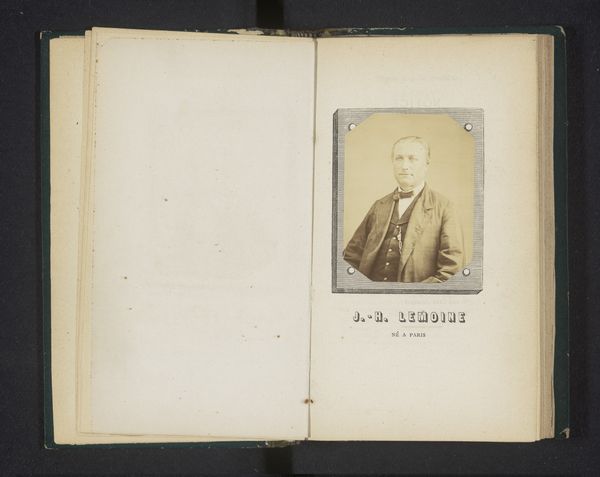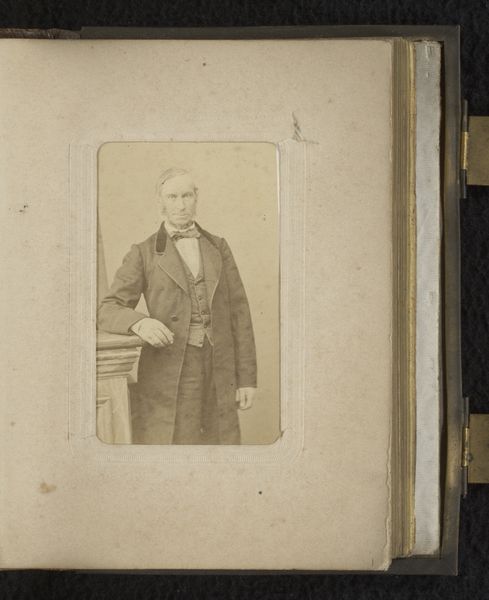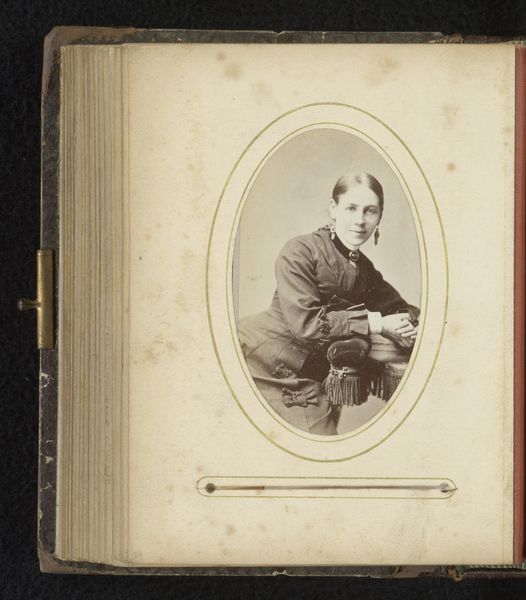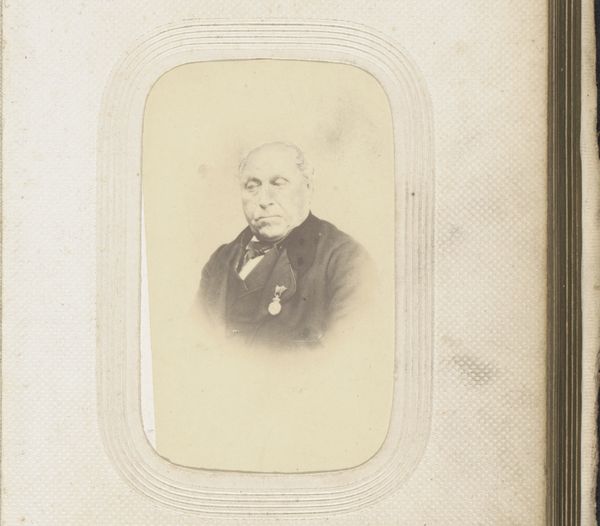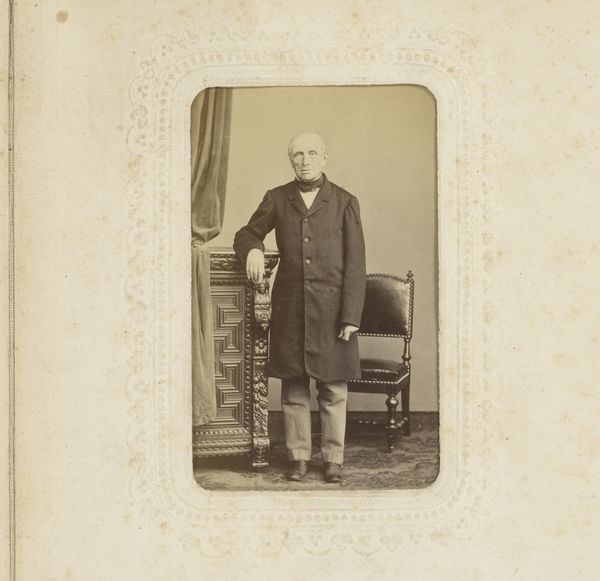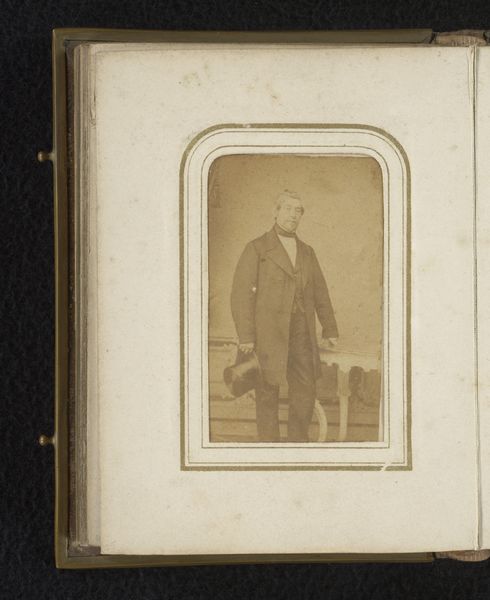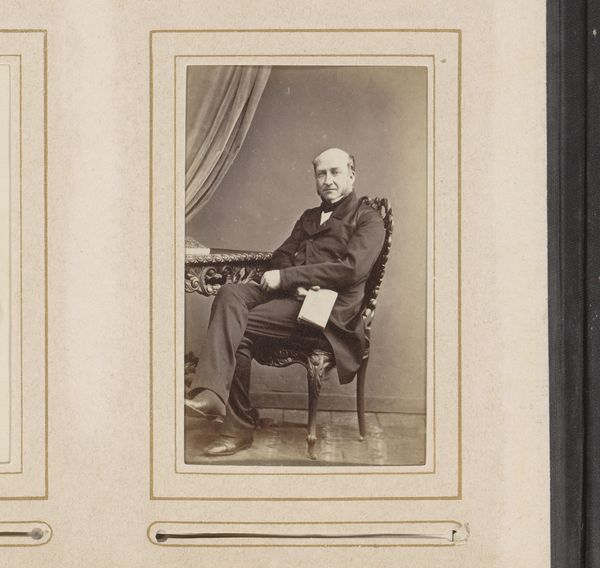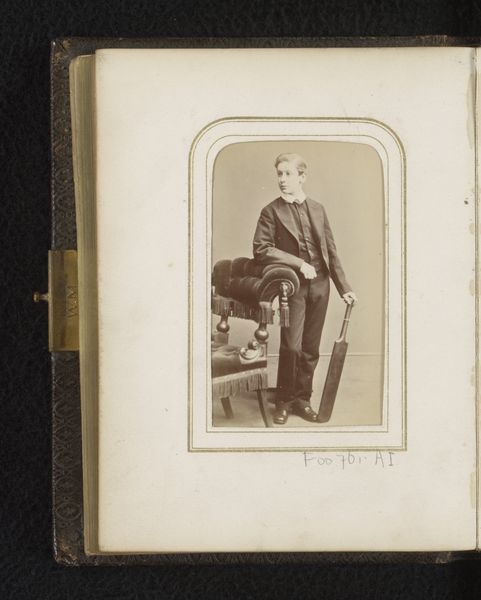
photography, albumen-print
#
portrait
#
photography
#
coloured pencil
#
watercolor
#
albumen-print
Dimensions: height 84 mm, width 52 mm
Copyright: Rijks Museum: Open Domain
Hermanus Jodocus Weesing made this photographic portrait of a seated man, likely sometime in the late 19th century. While photography can seem purely representational, it's worth considering the material processes at play. The photographic print itself, likely an albumen print, was produced through a complex chemical process, requiring specific expertise and equipment. Each stage, from preparing the glass plate negative to coating the paper, involved skilled labor. Consider the sitter too. His clothing, a dark suit, speaks to a certain social class and the conventions of formal portraiture at the time. Photography, in its early days, was a relatively expensive technology, making it a privilege for the middle and upper classes. So, while this image may seem like a straightforward depiction of an individual, it's also a document of material processes, social practices, and economic realities of its time. It prompts us to think about who had access to representation and how the very act of making an image was shaped by technology and social class.
Comments
No comments
Be the first to comment and join the conversation on the ultimate creative platform.
